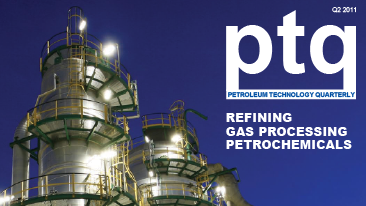Five different meetings with refinery managers in the last year, three different geographical regions, five different companies. And they all had the same need!
“Our schedulers are not talking in a systematic way to our planners, and we are not getting our actuals closer to plan. Please help us link up operations with planning better,” these executives told me.
It is with an eye focused closely on this challenge that AspenTech has developed a comprehensive end-to-end solution that we call “Unified Production Optimization.”
I discussed this with Steve Williams, AspenTech’s vice president of Operations products, on a recent visit he made to the company headquarters.
“Every refinery has the challenge of getting refinery operations to get closer to the plan that they try to operate to, on a monthly, or sometimes more frequent basis,” Steve told me. “There is very significant money left on the table in every refinery. Leadership knows this.”
Steve, whose purview includes two technologies very widely used in refineries worldwide (Aspen PIMS-AO™ for planning and Aspen DMC3™ for advanced control), added, “We saw a huge gap in the market, a huge opportunity, namely tying together the plan and schedule with advanced control.”
So when AspenTech saw the opportunity to acquire a breakthrough technology from a startup software company, APEX Optimisation, makers of Generic Dynamic Optimisation Technology (GDOT), we jumped.
Henrik Terndrup, one of the brains behind GDOT and a key member of APEX who has come to AspenTech with the acquisition, told me, “Getting GDOT into the AspenTech family is fantastic. It has been designed to work closely in step with planning and execute the plan dynamically in advanced control.”
Henrik is looking forward to taking this solution to the market on a much more aggressive and broad basis. “By tying Aspen PIMS-AO, as well as blend scheduling, very closely to the innovative GDOT dynamic optimizer, the APC systems can be dynamically adjusted and capture a lot of these dollars that refinery manager are seeing left on the table,” he added.
GDOT has already been implemented at 16 refinery sites, and in each case has achieved significant measured margin and profit benefits. One of the “sweet spots” for this technology has already been middle distillates, where GDOT can act on real-time plant data to constantly update the dynamic simulation and adjust the APC controller to get the plant as close as possible to the plan.
In several of these implementations, this has yielded over $10 million per year in incremental profit. Other targeted areas include coking and residuals, hydrogen and utilities and ethylene cracking.
Steve Williams, for one, is excited about the potential.
“Since the acquisition, we’ve already learned that this solution is even more powerful and broad than we anticipated,” he said. “At one refinery we’ve spoken too, which has already implemented the solution tied to DMC advanced control, not only did GDOT bring the actual very close to plan, but in fact it resulted in yields above what the refinery thought was the most possible production from that area of the plant. This means that the refinery manager can actually look to more aggressive economic targets coming from planning, so that the plan in some cases will actually exceed the actual!”





Leave A Comment